How to calculate FOV of lens?
How to calculate FOV of lens?
Best answer by David.Nguyen
Hi Kivahan,
Without more context, I’d say there’s no formula that will give you a direct answer to your question. Instead, what I would do is progressively increase the FOV and check that the image quality remains within your specifications.
Take this dummy landscape lens for example (also attached to my reply):
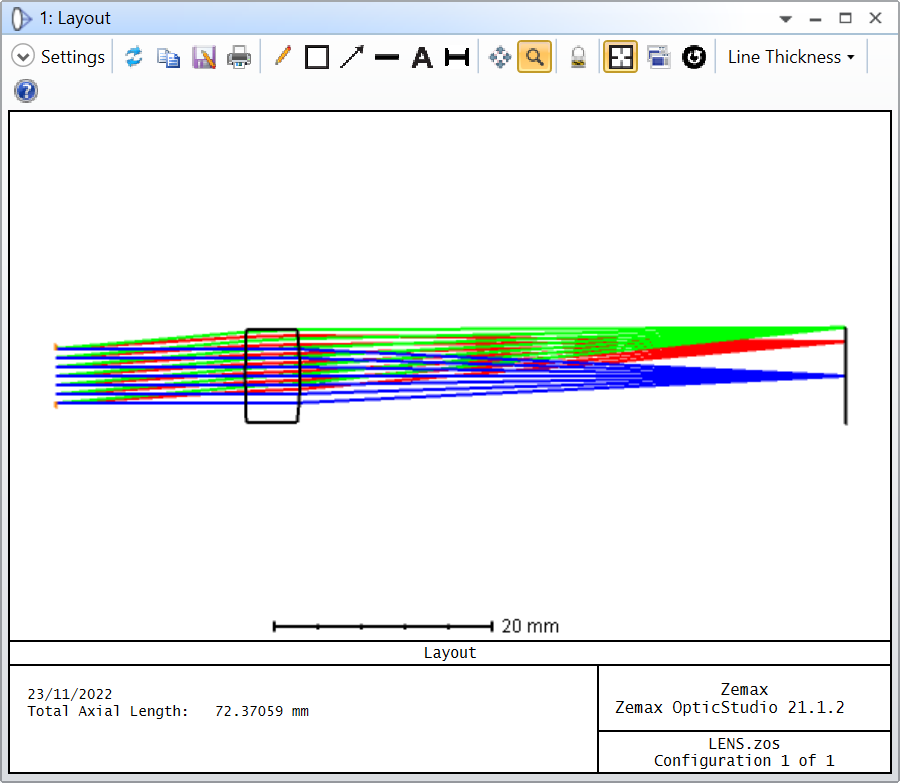
At the moment we have three equal-area fields spread over a half field of view of 5 degrees. This is the spot diagram for the +5 degree field:
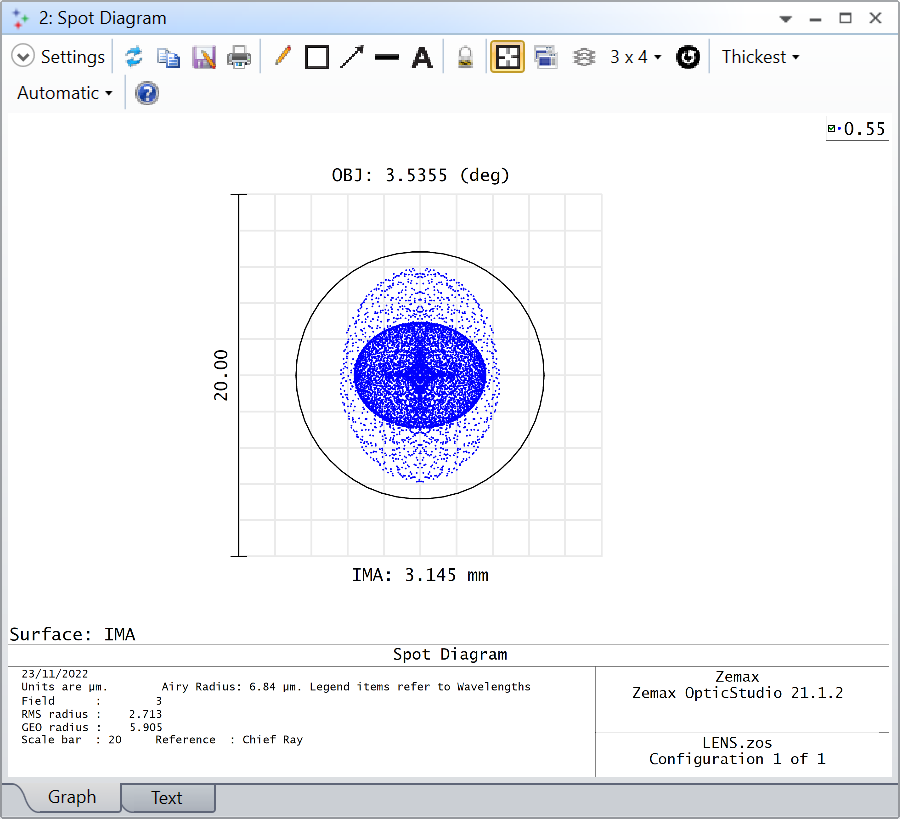
As you can see, the RMS radius is 2.7 um and is well below the Airy radius of 6.8 um. Therefore, one could ask, how much can the field of view increase while the RMS radius remains smaller than the Airy radius. Note that this criterion is arbitrary, you could choose another one, like a certain amount of wavefront error for example.
We can do that in OpticStudio using the Multi-Configuration operand YFIE, which allows you to set a field value as a variable:
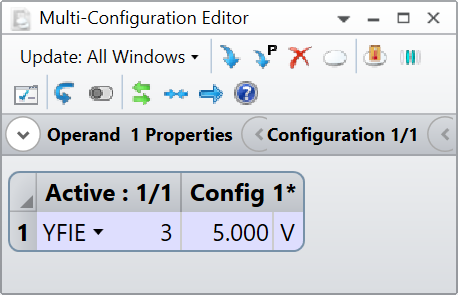
In this case, I made the +5 degree field (Field 3) as a variable. Then, in the Merit Function Editor we can use the operand MCOV to read the value of the YFIE Multi-Configuration operand. Instead of targeting an arbitrarily high YFIE value, I like to use RECI and target it to zero, that way OpticStudio will try to maximize your field of view. You also need to use RSCE, which gives you the RMS spot radius and OPLT, which ensures the spot operand remains smaller than a certain value, say the Airy radius in our example. This is what my Merit Function looks like:
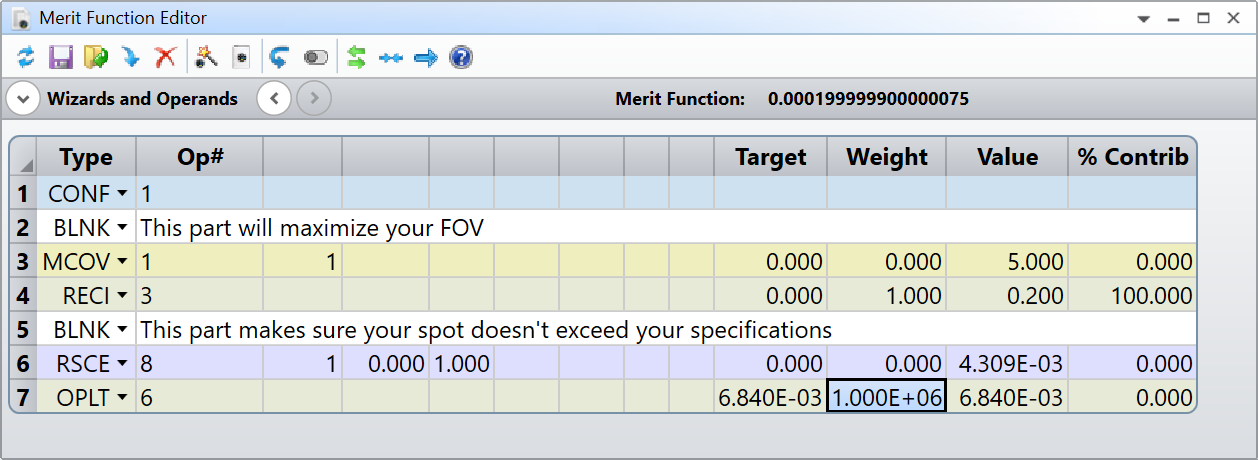
Notice where the Weights are and their value. For OPLT, I had to put a high weight to ensure this operand wouldn’t be violated. After optimization, this is what the Merit Function Editor looks like:
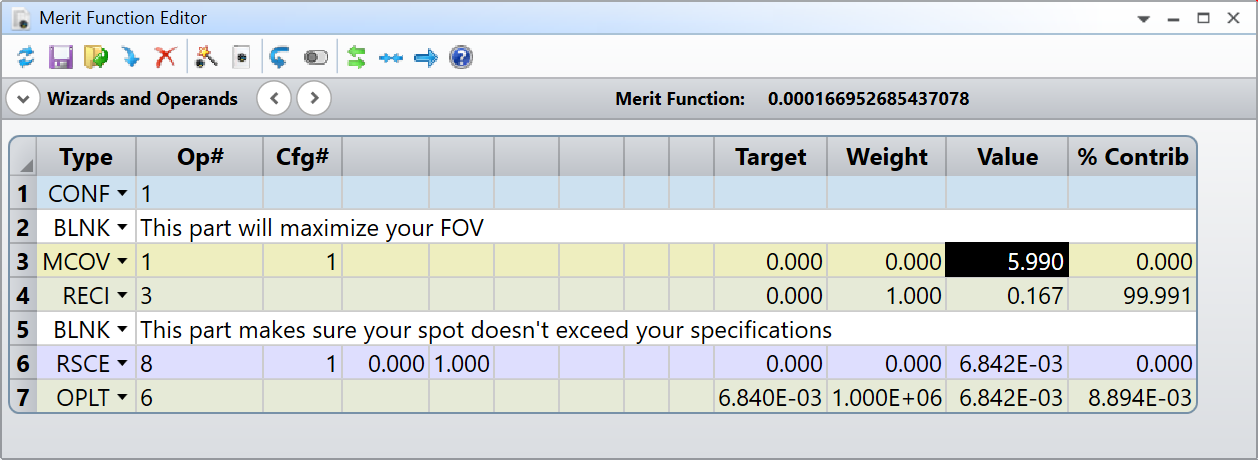
As you can see, the RMS spot radius at the edge of the field of view is now really close to the Airy radius, in fact is is a little bit greater (by 2 nm). And the half field of view carried by the MCOV operand is now 5.990. Therefore, one could say the FOV is 11.98 degrees. Note that in some cases, the most extreme field might not exhibit the largest spot, in which case I would check the spot size in different location and take the maximum with the MAXX operand.
I hope this helps and take care,
David
Reply
Enter your E-mail address. We'll send you an e-mail with instructions to reset your password.



